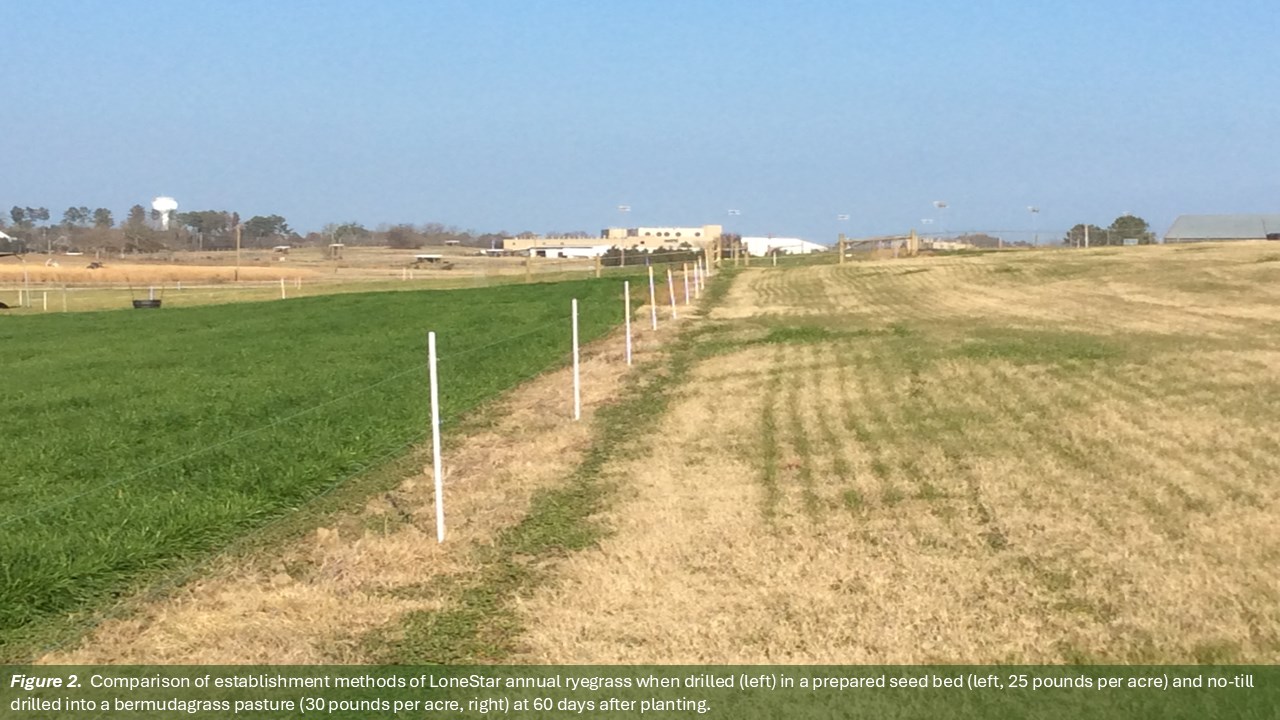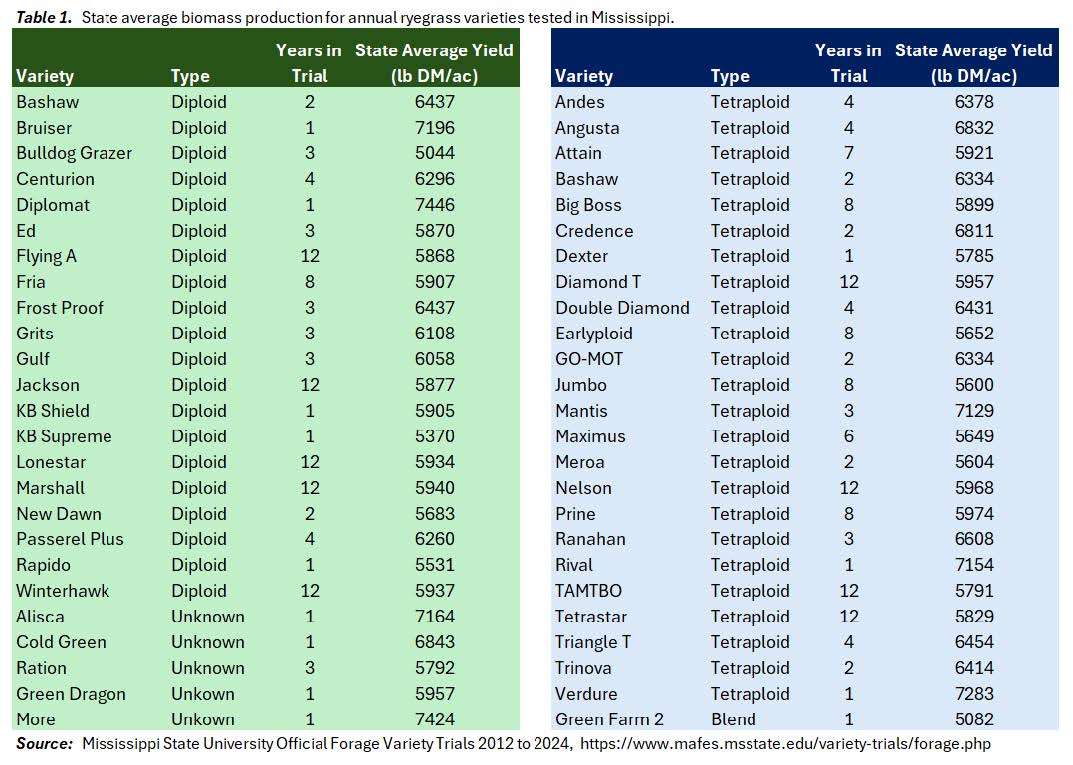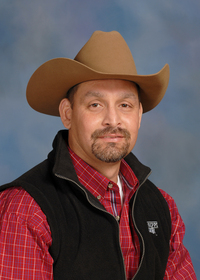Selecting and Annual Tyegrass Variety and its Management
It is the time of the year when County Extension Offices start to get questions from producers about what annual ryegrass varieties (Figure 1) should be planted, what was the best variety in the Mississippi State University Forage Variety Trial last year, what variety might provide the best return in the investment, what to look in a variety. Before making that decision there are a few tips that producers should consider:
Selecting an Annual Ryegrass Variety – Several important aspects should be considered when selecting a variety. Those aspects include the ploidy level, maturity, cold tolerance, early season production, resistance to rust, and seasonal yield production. Annual ryegrasses could be diploid or tetraploid. Diploids have narrow leaves, produce more tillers at the crown, and have smaller seeds while tetraploids have wider leaves, tiller less at the base, and have larger seeds. Tetraploid cultivars are usually marketed as producing more forage biomass than diploids, but this could depend on location, management, fertility, and environmental conditions. Diploids might have a greater cold tolerance and quicker recovery. A twelve-year state average yield comparison between diploids and tetraploids indicates no seasonal forage biomass differences. There is little difference among varieties on nutritive value. Ryegrass retains nutritive value for most of the growing season when in the vegetative stage with crude protein ranging from 18 to 22 percent and acid detergent fiber (ADF) between 28 and 32 percent on a dry matter basis. This allows the utilization of annual ryegrass by all classes of livestock. One drawback of annual ryegrass could be the medium resistance to winter hardiness.
The Mississippi annual ryegrass variety testing program provides information on performance traits and adaptation of different varieties of annual ryegrass (Table 1). The tests are run over several years and across many locations statewide to find the varieties that are best adapted for each area. MSU research and Extension professionals develop a variety of recommendations based on these tests. Choose data from the evaluation trial that was conducted closest to your area and varieties that have been on the trial for a minimum of three years before you choose a ryegrass that will fit your beef program or any other livestock grazing management system. The trial results will help you select high-performance varieties that are productive during the desired season of use. To learn more about variety information visit https://www.mafes.msstate.edu/varietytrials/forage.php.
Seed Quality – Good seed of annual ryegrass will germinate 8 to 12 days after planting with adequate soil moisture. When considering annual ryegrass, it is always important to buy certified seed and check when the germination test was performed. If the germination test is more than six months old, request a test for germination and purity. The germination and purity percentage of the seed is used to determine the percent of Pure Live Seeds in the bag and how bulk seeding rates need to be adjusted to achieve the recommended seeding rate and optimum plant population. This information is also important when comparing the price per pound of seed between varieties and the cost of seed per acre.
Establishment Methods – This means land preparation, planting method, planting date, and seeding rate. Two common methods of land preparation include a prepared seed bed or overseeding a warm-season perennial pasture (bahiagrass or bermudagrass). Annual ryegrass should be planted at ¼ to 3/8” deep. The planting methods include using a calibrated drill in the prepared seedbed, broadcasting the seed (prepared seedbed or existing pasture), or using a no-till drill in an existing pasture. It is important to consider the type of seed (diploid or tetraploid) when calibrating your drill. Do not expect that your drill calibration from last year will be the same for the seed that you bought this year. Using a drill in a prepared seedbed might provide earlier grazing than overseeding a pasture due to the increase in soil-to-seed contact. When overseeding a pasture (no-till or broadcasting) it is important to reduce the existing biomass to allow seed germination by either clipping or grazing the area very short or using a chemical burndown (very low glyphosate rate or paraquat). Keep in mind that planting into an existing pasture might be later in the season with the summer grasses going dormant to reduce the competition. Some producers prefer mixing seed with fertilizer and using a spinner. Remember that nitrogen is an acidic component and when let set for a prolonged period, it could damage the embryo of the seed. You could apply phosphorus and potassium in the seed mix, but it is recommended to hold on to the nitrogen. Also, the annual ryegrass seed is lighter than the fertilizer and it might not spread as far with the spinner which means you will need to split the middles to get a uniform seed application. Data collected at Mississippi State University indicated that overseeding a pasture with annual ryegrass could have 4 to 6 weeks of grazing potential in the spring when compared to prepared seedbeds (Figure 2). Some producers might implement a dormant seeding in December through February is also a possibility, but not the preferred method since close to 45 to 60 percent of the forage production could occur.

The ideal time to plant annual ryegrass in Mississippi is from the middle of September to the end of October. Annual ryegrass should be planted at 20 to 25 pounds per acre in a prepared seed bed and 30 to 35 pounds per acre when broadcast or seeding an existing pasture. Establishment studies at Mississippi State University have indicated no yield advantage in annual ryegrass above 30 pounds per acre across different establishment methods. The use of high seeding rates does increase establishment cost per acre while plant competition might reduce tiller production and therefore no yield increase.
Fertilization – As indicated above, the application of phosphorus and potassium based on soil test recommendations can be done at planting because these nutrients are less mobile in the soil. Nitrogen can be lost more quickly from the soil, especially under typical September and October dry conditions. Germination takes 8 to 12 days, and root development capable of nutrient uptake could take 5 to 10 days. This means that we are looking at 15 to days before the nitrogen can be used. By then, most of the applied nitrogen might be lost. It is recommended to wait until the annual ryegrass has germinated and it is about 2 to 3 inches to apply the nitrogen application of 50 units of nitrogen per acre (about 110 pounds of bulk urea).
Grazing Management – An annual ryegrass pasture should be ready to graze around six weeks to eight after drilling depending on soil temperatures, seedbed preparation, fertilization, and variety. The growth of annual ryegrass will vary between regions in Mississippi, during the growing season, and from year to year. The first grazing of the season should start when annual ryegrass is 8 to 12 inches tall and not to graze shorter than three inches allowing a recovery period of three to four weeks during the active regrowth period. The recovery period might be longer from late December to early February compared to the active springtime.



